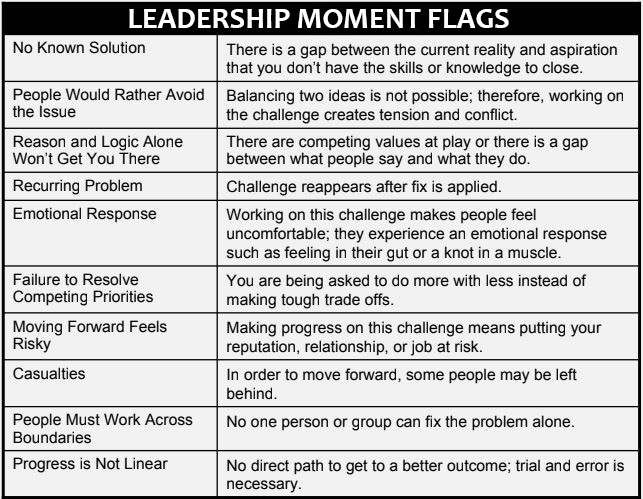We each face five or more moments per day where we have to make a leadership choice, regardless of our formal role or title. Would you recognize such a “leadership moment” when it crosses your desk? Would you know what to do with it? This article helps you know when it’s your time to lead. In my session at SB’19 Detroit, people will have a chance to identify a leadership moment they face to deliver “the good life of tomorrow” today.
-Eric Martin

Let’s suspend any lofty notions of leadership as a visionary, strong, charismatic figure who inspires the masses. The truth is that’s the stuff of both dictators and great change-makers alike. It has nothing to do with leadership.
For over fifteen years, I’ve had the pleasure of working closely with the people who developed the Adaptive Leadership framework at Harvard. I’ve also had the honor of helping bring it to worldwide scale and practice — from Harvard to the “real world” as I often quip. Through much trial and experimentation to translate this sophisticated set of ideas into daily practice, I’ve learned that it’s most helpful to view leadership as a moment, rather than as a trait, a behavior, and certainly not as a person.
Leadership moments are ones that make your heart leap with hopeful anticipation or fear of taking the next step. Take a minute to reflect on the last time you faced such a moment. The racist uncle you or a family member decided to engage at Thanksgiving dinner — that was a leadership moment. The risk a friend took to confront you about your polarizing political rants on Facebook, rather than becoming complicit in it — that was a leadership moment. So too was the time your boss brought together yours and a competing team to talk through your respective siloed behavior. And the time your nonprofit employee challenged management to re-prioritize its mission over its funders’ interests. As difficult as they are, moments like these feel like real growth or movement in our work, in our family, team or community, and in our very selves. That’s what makes exercising leadership worth the risk involved. What makes a leadership moment is the nature of the problem at hand, and how we decide to tackle it — not traits like charisma and vision, though these can be useful tools in the moment.
Until about twenty years ago, the average executive faced less than two leadership moments per day. Today, the average person — not just executive — faces 5+ leadership moments every day. This is due to many factors including, paradoxically, a flatter and more connected world due to the democratizing power of technology combined with the rise of polarization, authoritarianism and people’s willingness to take on inequity. The Arab Uprising and the #MeToo movement, for example, were full of many such individual leadership moments. Often the first sign you’re facing a leadership moment is a growing pit in your stomach. Your heart starts to race, or your anger rises — what’s known in neuroscience as an amygdala hijack or fight or flight response. It happens at work, at home, even on social media. Leadership moments are also recognizable by the deeply felt experience of growth and movement they create.
Our work to ‘democratize leadership’ and help people succeed every time they face a leadership moment is driven by four core beliefs:
1.
Everyone leads everyday. Transformation occurs not just through large, convulsive changes but also through the accumulation of smaller, everyday leadership moments.
2.
Success demands democratized access to the best leadership resources. We must empower all people to lead effectively by providing the best possible resources, currently reserved for a privileged few.
3.
Continuous change is normal. We must continually adapt to survive and thrive.
4.
People matter most. Although access to knowledge is great, people learn from people how to create meaningful change.
Would you recognize a leadership moment when it crosses your desk? Here are ten “flags” to help you see these opportunities when they arise. How to actually engage in a leadership moment will be the subject the next article. For now, just notice the moments when they occur — and, importantly as a first step, notice your typical reaction or response. To be continued…


About Eric
Eric Martin is the Managing Director of Adaptive Change Advisors (ACA), the preeminent organization for mission-driven Adaptive Leadership development.


